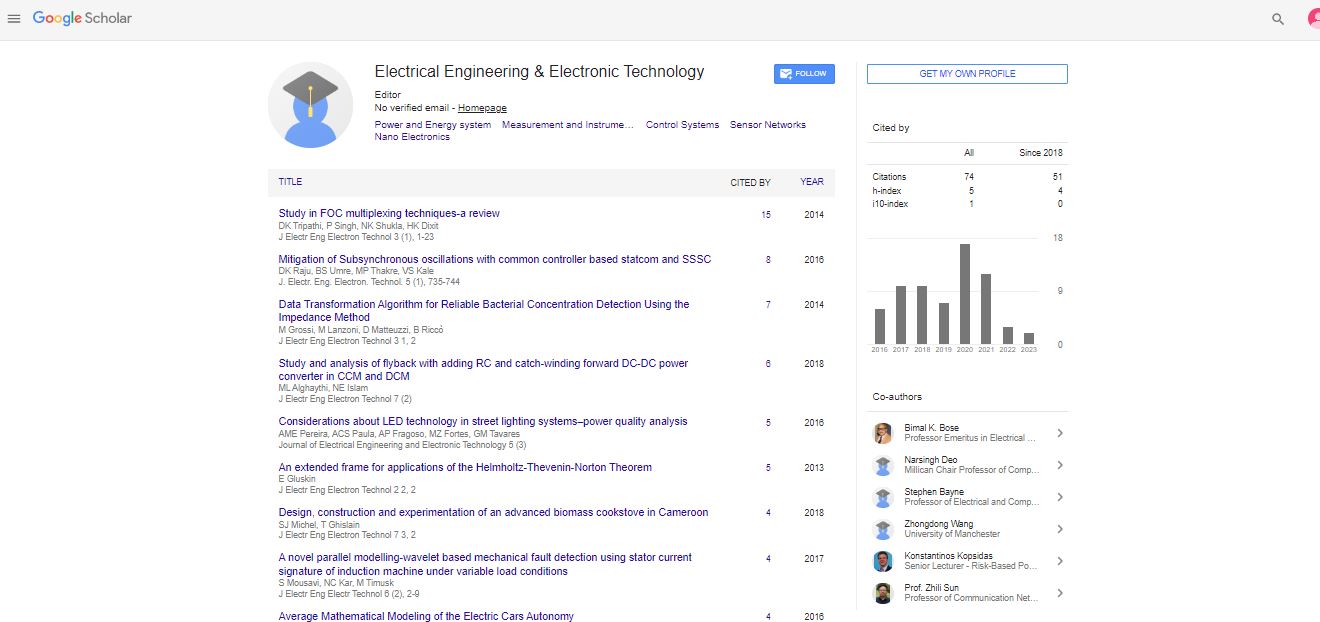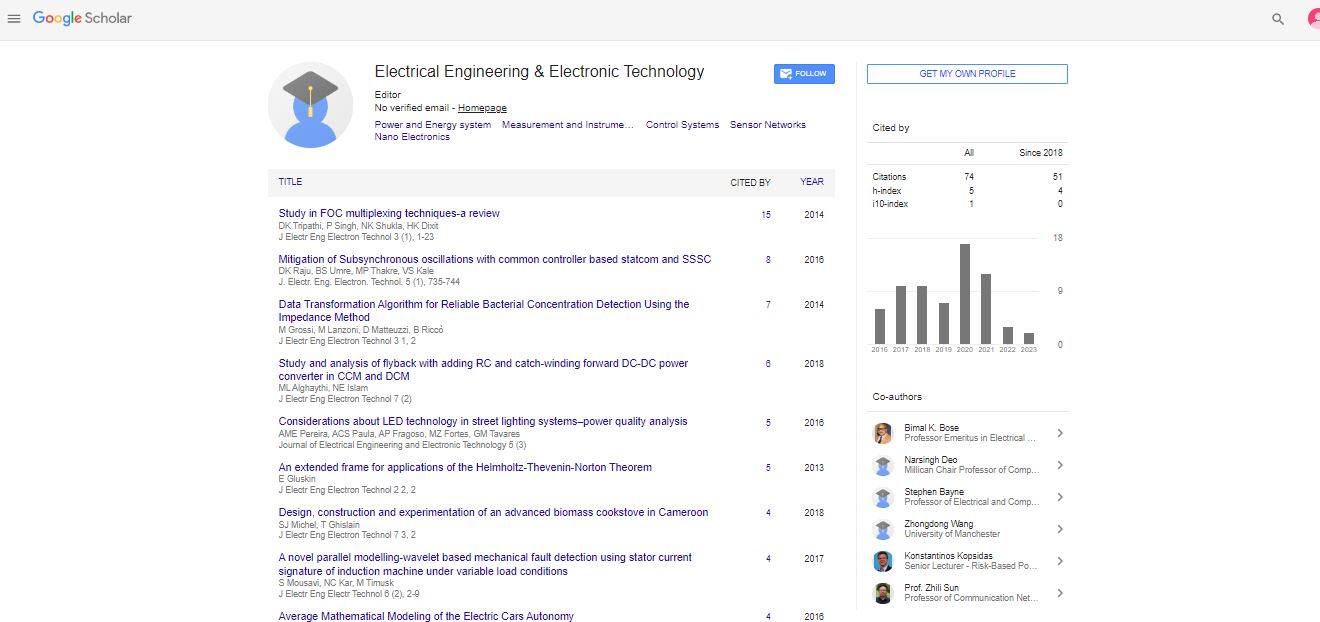Review Article, J Electr Eng Electron Technol Vol: 1 Issue: 1
Silicon Carbide Technology Overview
| Stephen B. Bayne* and Bejoy N Pushpakaran | |
| Texas Tech University, USA Texas Tech University, USA | |
| Corresponding author : Dr. Stephen B. Bayne Texas Tech University, USA E-mail: stephen.bayne@ttu.edu |
|
| Received: July 09, 2012 Accepted: August 02, 2012 Published: August 06, 2012 | |
| Citation: Bayne SB, Pushpakaran BN (2012) Silicon Carbide Technology Overview. J Electr Eng Electron Technol 1:1. doi:10.4172/2325-9833.1000101 |
Abstract
Silicon Carbide Technology Overview
After several years of research and development, Silicon Carbide has emerged as a prominent successor to conventional silicon in the field of power electronics due to its exceptional advantages. Silicon carbide material improves the efficiency of semiconductor devices and also facilitates usage of devices with much smaller form factor. The chemical and electronic properties of Silicon carbide translate to features which are useful for semiconductors especially in high power applications. These features include inherent radiation-resistance, high-temperature operating capacity, high voltage and power handling capacity. The use of SiC specifically in the areas of industrial control, power and renewable energy (solar & wind sector) also enables smaller cooling solutions in the system design. SiC electronics also find applications in electric vehicles and hybrid electric vehicles, electric traction control, power supply units, photovoltaic applications, converters and inverters.
 Spanish
Spanish  Chinese
Chinese  Russian
Russian  German
German  French
French  Japanese
Japanese  Portuguese
Portuguese  Hindi
Hindi 
